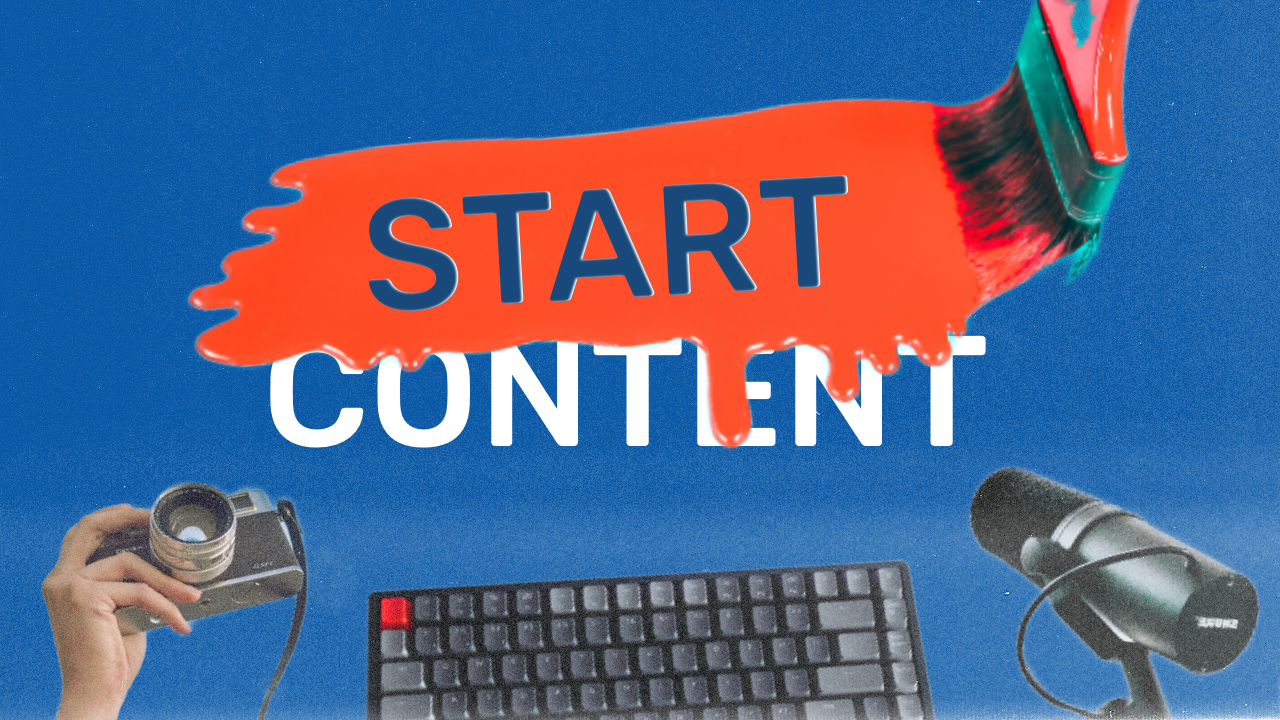Creating Your First Science/Climate Content
Navigating the world of science communication can be a rewarding journey, yet challenging if you don’t know where to start. To illustrate the process, let's craft a piece on "El Niño and the impacts on climate change" together.
I want to take you through the thought processes you have to go through while you are making content about a certain topic. In our previous blogs we already discussed some of these steps in more detail, so go have a look if you need more context! Let’s start at the start:
STEP 1: Identify Your Core Message
Every piece of content should have a central theme or message. This is the foundational idea that you want your audience to take away after consuming your content. What do you want your audience to remember after consuming your content? A great way to test this is the friend test: Explain your message to a friend, then ask them to explain it to another friend. If your message is solid and clear, they should have no issue repeating what you said!
In our case: The core message is to highlight the interplay between the El Niño event and its potential to amplify the effects of climate change over the next ten years.
STEP 2: Your Audience's Perspective
We already went over this, but just here’s the gist: tailor your content to your audience's level of understanding, interests, and potential misconceptions so your message connects on a personal level. Who is your primary audience, and what are their current beliefs or knowledge about the topic?
From there you can start to personalise the message and almost talk to them directly. This might feel counterintuitive… don’t we want to reach more and more people with our message? Yet, if you scream at everyone, nobody will hear you. Think about this, if someone directs their talk directly at you, aren’t you more interested in listening?
In our case: The audience might have heard about El Niño as a weather phenomenon on the news, but may not understand its connection to broader climate change impacts. Address this gap in knowledge.
STEP 3: Select the Ideal Medium
Different mediums offer varied ways of presenting information. Your choice should align with the depth of content, audience preference, and the nature of the topic. Which medium will best convey your core message while engaging your target audience?
For example, if you know you are trying to reach a younger audience, you might want to try your luck with a vertical short from video on apps like TikTok, Instagram Reels or Youtube Shorts. Find out where your audience hangs out, online or in the real world!
In our case: Given the complexity of the topic and interest of our audience in science topics, a long-form blog post might be suitable to explain the intricacies of El Niño and climate change. We are also incorporating a summary in an email list, so we can potential readers find the blog.
STEP 4: Dive Deep into Research
Depending on your expertise, you might be able to reduce the time spend in this step! But here’s the reasoning: credibility is paramount in science communication. Ensure that your content is backed by up-to-date and reputable sources. Are your sources recent, reputable, and relevant to your topic?
We have far too much misinformation already being spread out over the web and popular magazines. We and the audiences trust that the scientists’ and researchers’ content is fact based after all. I don’t think I need to tell you all this, but better safe than sorry! Posting on social media doesn’t mean you get to cut corners after all.
In our case: We research recent studies on El Niño's impact, historical data, and projections related to climate change for the next decade. For this we’ll look at scientific institutes and reputable sources.
STEP 5: Weave a Captivating Story
A structured narrative can make complex topics more digestible and memorable. It provides context, builds interest, and leads the audience through a logical progression of ideas. How can you structure your content to have a clear beginning, middle, and end?
In science we are used to think in: introduction, materials & methods, results, discussion and sources. However, besides peers, most of the audiences won’t think the same way. See if you can think of metaphors and analogues to explain your message and weave in a story that holds their interest.
In our case: We might begin with some impacts caused by El Niño events (to grab the attention), then explain the concept and processes that make these impacts happen, and finally talk about future projections in the context of climate change.
STEP 6: Incorporate Engaging Visuals
Visual elements can break up text, illustrate complex ideas, and make video content more engaging. There are a multitude of ways you can work with images, visuals or infographics, so think about how those could work with your medium of choice. What visuals can you incorporate to enhance understanding and retention of your content?
Even if you are working with audio only podcasts, you can think about turning quotes into social media posts. You can use the concepts of your message and create a simple flowchart. The possibilities are endless!
In our case: in the long form text we can use two graphs to show temperature changes between different periods to see the effect of an El Niño event. If we are turning the blog into an instagram post, we could create a Instagram carousel with animations to show the difference and apply it to different regions on a map.
STEP 7: Foster Interaction
This has two effects. One more social: engaging with your audience can provide valuable insights, foster community, and enhance the impact of your content. One more practical: by integrating some interaction, you can increase the engagement on your content piece. This matters if you are posting it on social media and the respective algorithms are looking at how “well” a post is performing. So, how can you encourage your audience to interact with your content or with you?
Think of including questions or call-to-actions in the latter half of your content. This might be to go to your profile, to subscribe, watch a next video, or just to leave a like and comment.
In our case: We might use a poll asking readers about their experiences with El Niño-related weather changes or a comment section for sharing personal stories. Since we are targeting people across the globe that are interested in climate stories, we might get some new insights and possible new stories to cover on the blog!
STEP 8: Fine-Tune Your Content
Now we’re getting closer to hitting publish! Do a double check on clarity, coherence, and conciseness. Reviewing and refining your content ensures that your message is clear and free from ambiguity or just… stupid little mistakes (been there done that). Have you reviewed your content for clarity, coherence, and any potential ambiguities?
In media this is the part where the editor proof reads the content, or has a few last listening/viewing rounds to experience the final version as an audience member. I’m going to bet you can spot a few mistakes.
In our case: Once finished, we’ll take a break and come back with fresh eyes to ensure that the connection between El Niño and climate change is clear and well-supported by evidence. We might also share it with some collaborators who are out of the scientific community and at a similar science level as our audience. Let’s see if they get the message.
STEP 9: Amplify Your Reach
Nope, we’re not done yet! Besides sharing we can also promote the content to maximize its reach and impact. Are there other places you can find your target audience, besides your chosen platform, and how can you best reach them?
Thanks to the variety in media you can easily morph your content for different use-cases. We already hinted at it in an above section, but turning content into smaller content pieces can be very advantageous for extra reach! Think in terms of long-form or ‘macro’ content and splitting that into smaller short-form or ‘micro’ content. Infographics can become slides on twitter or instagram. Podcasts can become quotes. Blogs can become tweet-storms (or X-storms now?).
In our case: We’ll share the article on our blog, link it in our email newsletter and post visuals to instagram carousels and stories. We might even turn the blog into a preliminary script we can craft into a TikTok video!
STEP10: Use the Feedback
Feedback, both positive and constructive, is a valuable tool for your own growth and improvement in science communication. You’ll learn what works with your audience, and what NOT works for your audience. How can you actively seek feedback, and how will you use it to refine your future content?
The main take aways will be parts of your content that are interesting or boring. By using platform provided analytics, you can even see where people click away, or loose interest. Some viewers might comment new ideas that you can incorporate in your content plan. Read though your replies and analyse your data. You’ll be surprised how much you can learn from your audience!
In our case: After publishing, we’ll go through the social media posts and gather feedback to see where we can adjust storytelling elements. We can take note of how people interact and see if the topic is something they find interesting or useful, or rather boring. In the last case, we might need to find a new way of showcasing the message that better relates to our audience.
STEP 11: Join the Movement
If you want to learn more about where to start with your science communication I might have something for you. In the workbook below I’ve compiled a 30 step guide which gets you through all the steps of communicating your research. No prior knowledge required. The goal is to get more science content on the web, and we have to start at the start!







